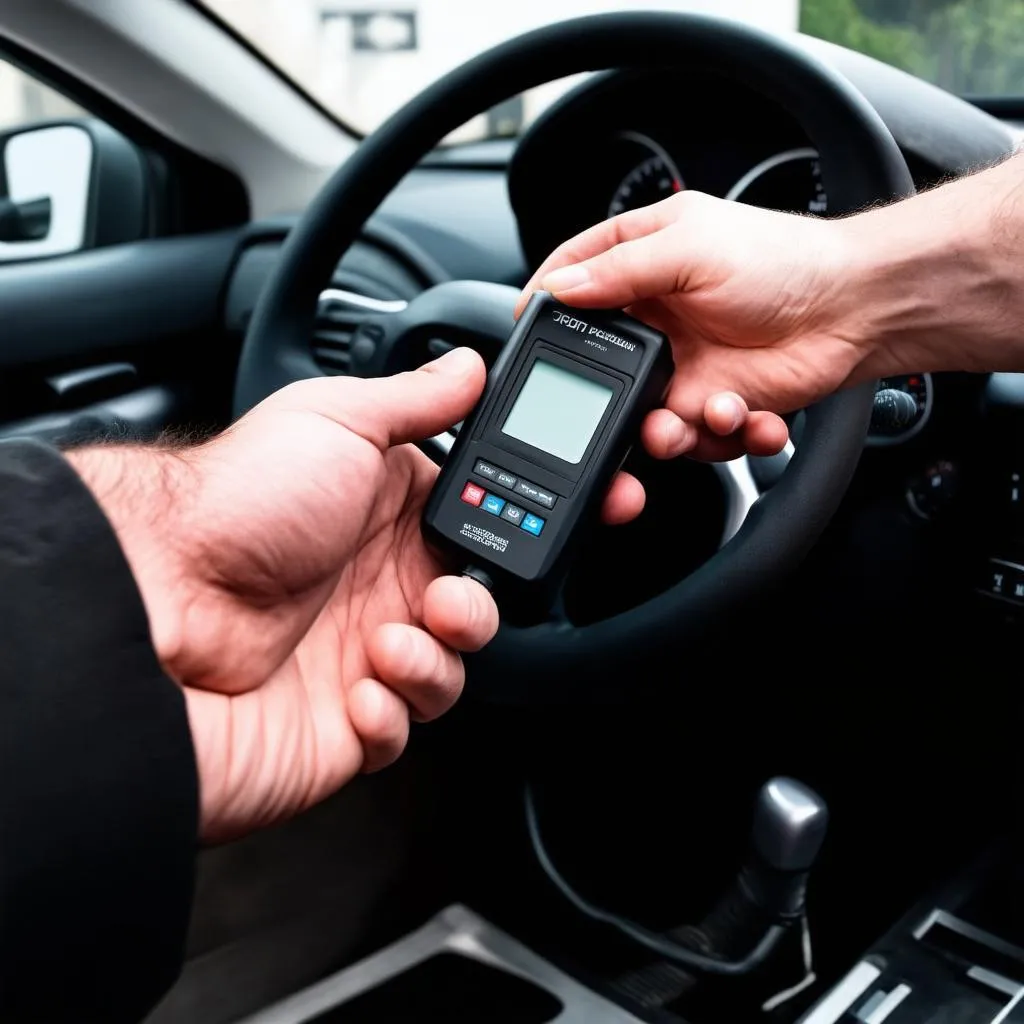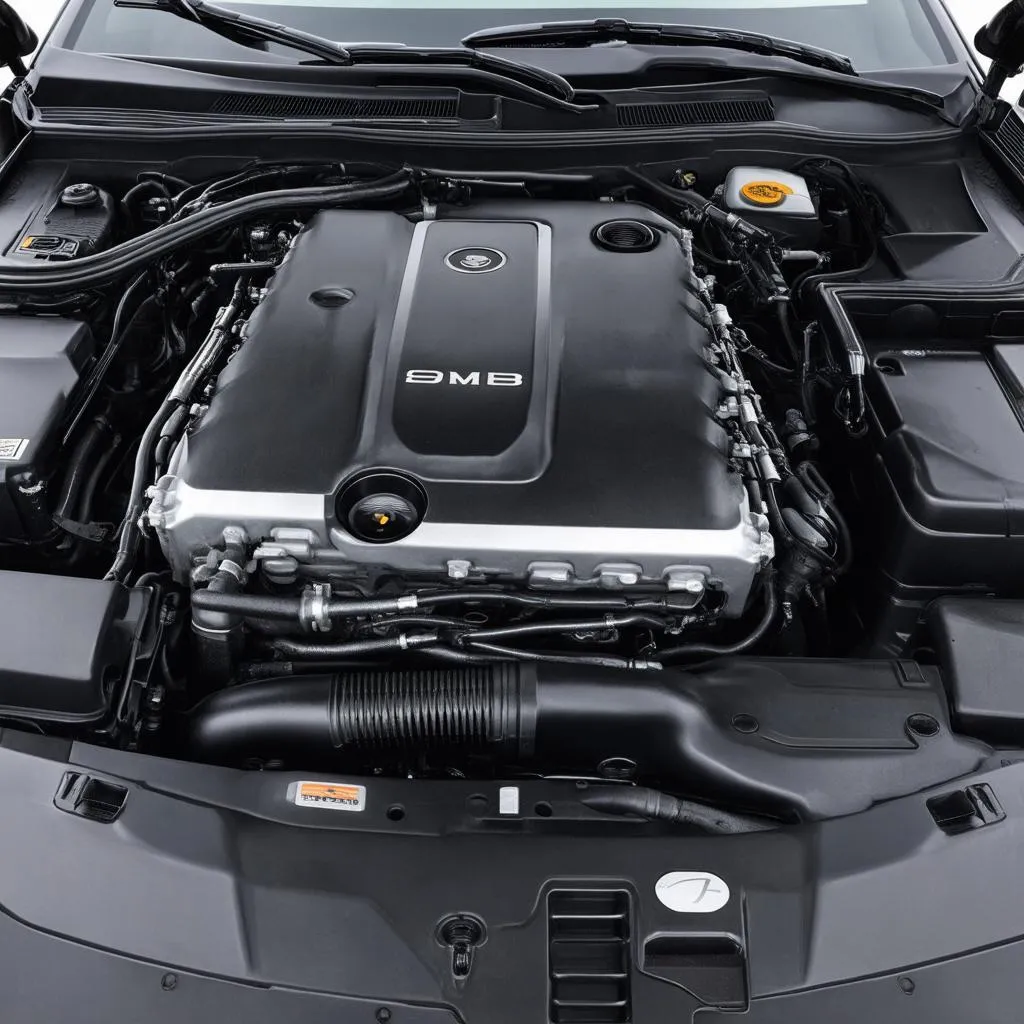Ever felt like your car was speaking a foreign language? You’re cruising down the road, enjoying the scenery, and BAM! That dreaded check engine light throws a wrench in your zen. We’ve all been there. But what does it all mean?
Enter the world of Obd P Code Lists, your key to understanding those cryptic messages from your car’s computer. Think of it like this – your car has a story to tell, and these codes are the chapters.
Decoding the Language of Your Car: What is an Obd P Code List?
“OBD” stands for On-Board Diagnostics, and “P” refers to Powertrain codes. These codes act as a diagnostic trouble code (DTC) system, pinpointing potential issues within your engine, transmission, and emission control systems. It’s like your car’s own personal health journal, logging any hiccups along the way.
Imagine this: Your car starts sputtering like it just ran a marathon without any training. You hook up an OBD-II scanner (more on that later!), and bam—you get a code like P0301. This isn’t just a random string of numbers and letters, my friend. It’s telling you there’s a misfire in cylinder 1.
Why Should You Care About OBD P Codes?
Knowing these codes can save you time, money, and potentially a massive headache down the line. Here’s why:
- Early Detection is Key: Just like catching a cold early can prevent a full-blown flu, identifying car problems early can prevent costly repairs.
- Empowering You, the Driver: You can walk into a mechanic’s shop with knowledge, not blind trust. This can help you avoid unnecessary repairs and ensure you get a fair deal.
- DIY Diagnostics: With a little know-how, you can use OBD P Codes to diagnose and even fix some problems yourself.
Navigating the World of Obd P Code Lists
Now that you understand the “what,” let’s delve into the “how.” Here’s a breakdown:
- The Structure: Each code starts with a letter and four digits. The letter “P” signifies a powertrain code.
- The Digits: Each digit corresponds to a specific system or component:
- First Digit: Identifies the system (e.g., “0” for a generic code or “1” for a manufacturer-specific code).
- Second Digit: Narrows down the subsystem (e.g., “3” for the ignition system or “4” for the auxiliary emission controls).
- Third and Fourth Digits: Pinpoint the specific fault or component.
Tools of the Trade: Your OBD-II Scanner
Think of your OBD-II scanner as a translator for your car’s language. These handy devices come in various shapes and sizes, from simple code readers to advanced diagnostic tools.
Pro Tip: For European car owners, consider investing in a dealer-level scanner. These offer a deeper dive into your car’s systems and can access manufacturer-specific codes. Not sure which scanner is right for you? Check out our articles on OBD-II scanners for a detailed breakdown.
 OBD-II scanner
OBD-II scanner
Common OBD-II P Codes and What They Mean
Here are a few examples of common OBD P codes you might encounter:
- P0101: Mass Air Flow (MAF) Sensor Performance Problem
- P0300: Random/Multiple Cylinder Misfire Detected
- P0420: Catalyst System Efficiency Below Threshold (Bank 1)
Remember, these are just a few examples. For a more comprehensive list of OBD P codes, refer to your vehicle’s service manual or browse our website for specific car models like Toyota, GM, or Honda. You can also find helpful resources on BMW Z4 OBD codes or the more specific code P18104.
 Car Engine
Car Engine
A Holistic Approach: Car Maintenance and Beyond
While technology plays a crucial role in understanding our cars, don’t underestimate the power of intuition and a little TLC. Just like a healthy lifestyle promotes well-being, regular car maintenance can prevent many issues before they arise.
In many cultures, cars are seen as more than just machines; they represent freedom, adventure, and a connection to the open road. Taking care of your car, then, becomes a way of honoring that connection. Regular maintenance, like oil changes, tire rotations, and fluid checks, can go a long way in preventing those pesky OBD codes from popping up.
Need Help? We’ve Got Your Back!
Still, feel lost in translation? Don’t worry; we’re here to help! Contact us via WhatsApp at +84767531508 for expert assistance with all your diagnostic tool needs. Our team of automotive gurus is available 24/7 to answer your questions and guide you through the world of OBD P Codes.
Keep Exploring the World of Car Care!
This is just the tip of the iceberg when it comes to understanding your car’s inner workings. Explore our website for more in-depth articles on everything from specific OBD code breakdowns to DIY repair guides. Remember, knowledge is power, especially when it comes to your vehicle. Happy driving!